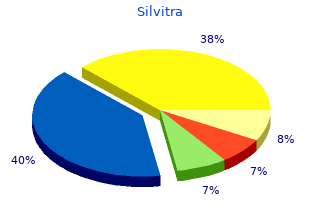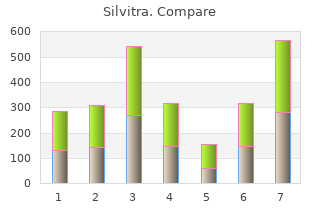Silvitra
2018, University of North Carolina at Greensboro, Samuel's review: "Silvitra 120 mg. Only $2,52 per pill. Buy online Silvitra.".
She also suggested that PRISM had not been used within ABM UHB to support service planning silvitra 120 mg with mastercard erectile dysfunction doctors los angeles. The manager identified a number of contextual issues which developed during the course of the study period – some at local level buy silvitra 120mg fast delivery impotence australia, some at national level – which may have influenced implementation. At local level, the old management structure of three localities was abolished and new clusters of practices were set up, with GPs:. At the same time, there was a loss of GPs and practice nurses from primary care in the local area, many leaving practice as they reached retirement age, with newly arriving clinicians less inclined to enter into partnerships, and more likely to opt to be part-time employees. Smaller practices, in particular, were seen to be struggling to be viable, and there were a number of practice closures. Combined with the increasing pressures of demand from an ageing population and a health system stretched in both primary and secondary care, this led to a situation described by the manager as:. The Welsh Government set up an Intermediate Care Fund, which supported health boards to develop community resource teams to provide multidisciplinary support for people at risk of admission. Three of these teams were established in the ABM UHB area. The manager was very much aware of the challenges of trying to implement an intervention as part of a research study, as a strong evidence base was not yet available to justify the intervention, and more particularly the time needed to support and promote it and to educate people in its use. This issue may be freely reproduced for the purposes of private research and study and extracts (or indeed, the full report) may be included in professional journals 93 provided that suitable acknowledgement is made and the reproduction is not associated with any form of advertising. Applications for commercial reproduction should be addressed to: NIHR Journals Library, National Institute for Health Research, Evaluation, Trials and Studies Coordinating Centre, Alpha House, University of Southampton Science Park, Southampton SO16 7NS, UK. STAKEHOLDER VIEWS: THE PREDICTIVE RISK STRATIFICATION MODEL IMPLEMENTATION AND USE Summary of practice staff questionnaires These findings summarise questionnaire data from general practice staff at intervention practices. Two rounds of questionnaires were conducted: mid-trial (3–6 months post intervention) for a sample of invited practices and at the end of the trial (18 months post intervention) for all practices in the study. Participation in the first round was 9 out of 16 practices, and in the second round 25 out of 32 practices. Text comments include the same numerical practice codes used elsewhere, and confirmation of whether the comment was received at mid-trial or at the end. Questionnaires were completed by PRISMATIC GP leads or their delegates (fellow GP or PM). Training and induction At the mid-trial point we asked respondents to indicate the usefulness of the training they received on using PRISM. Two-thirds of respondents questioned at the mid-trial point first used PRISM within 1 week of their training. Reported use of the Predictive RIsk Stratification Model We asked respondents at the mid-trial point to estimate how many times they had logged into PRISM over the preceding 3 months (Figure 7). The number of logins reported ranged from zero to 11+, with most reporting between one and six logins. At the end of the trial we asked respondents to estimate how many times they had logged into PRISM during the preceding 9 months; once again, most respondents reported one to six logins (see Figure 7). We asked respondents at the end of the trial to indicate when they last logged on to the PRISM website. For over half of respondents, this was over 4 months previously, with 4 of the 14 respondents indicating that they last used PRISM over 6 months previously. When asked at the end of the trial whether PRISM has been used more or less over the past 6 months than in the first few months, 9 of 13 (69%) of respondents reported less use. The user-reported data are consistent with patterns of logins as recorded by NWIS (see Table 31 and Figure 8). PRISM logins by registered users at PRISMATIC study practices (NWIS, 2016, personal communication) below. Targeting patient groups We asked respondents to indicate which groups of patients they had reviewed using PRISM (Figure 9). At both the trial mid-point and at the end, patients in the highest risk groups (3 and 4) were reported as the most frequent groups of patients reviewed; at the end of the trial, a wider range of patient groups was reported as being reviewed. When asked to indicate which one group was most frequently reviewed, respondents at mid-point were most likely (5/9) to say it was those at level 3 (high risk); at end-point, however, the most commonly cited group (5/13) was those patients at level 4 (the highest risk group). Who uses the Predictive RIsk Stratification Model, and how? We asked respondents at both time points to indicate who in their practice had been using PRISM, and how (Table 39). Respondents indicated that use is largely by GPs (particularly those leading on PRISM) and PMs.


Insight into the un- of DLB buy silvitra 120mg cheap erectile dysfunction quetiapine, such as delusions generic silvitra 120 mg with mastercard erectile dysfunction pump amazon, hallucinations, parkinsonism, real nature of these hallucinations is usually absent while and falls, but unacceptably low for others, particularly fluc- they occur but is gained after the event. Emphasis is placed of AD, the hallucinations are more persistent and the images on the particular characteristics of the dementia syn- are more likely to be accompanied by vocalization. Sponta- drome—attentional deficits and prominent frontal–sub- neous parkinsonism not attributable to medication is a key cortical and visuospatial dysfunction. Fluctuation is no symptom in most patients with DLB. If two of these three longer essential for the diagnosis, although it is frequently symptoms (fluctuations, visual hallucinations, and parkin- Chapter 91: Dementia with Lewy Bodies 1305 TABLE 91. AUTOPSY VALIDATION OF myoclonus in patients with a rapidly progressive form of CONSENSUS CRITERIA FOR DEMENTIA DLB may lead the clinician to suspect sporadic Creutz- WITH LEWY BODIES feldt–Jakob disease (11). In patients with intermit- tent delirium, appropriate examination and laboratory tests Mega et al. In patients with a prior aClinical diagnoses made prospectively, not by chart review. Other neu- rodegenerative akinetic–rigid syndromes associated with a sonism) are present, a diagnosis of probable DLB is made; poor response to levodopa, cognitive impairment, and pos- if only one is present, a diagnosis of possible DLB is allowed. All find the diagnostic specificity patient with so-called lower-body parkinsonism, cognitive to be relatively high, comparable with that of existing clini- impairment, and urinary incontinence. This high specificity suggests in DLB are often incorrectly attributed to transient ischemic that the DLB clinical criteria are appropriate for confirma- attacks despite an absence of focal neurologic signs. Sensitivity of case rent disturbances in consciousness accompanied by complex detection is reported as more variable and generally lower. However, movements during sleep may meet the criteria for REM two studies prospectively applying consensus criteria (as op- sleep behavior disorder. Both these conditions have been posed to retrospective inspection of previous case records) reported as uncommon presenting symptoms of autopsy- did detect more than 80% of autopsy-confirmed DLB cases confirmed DLB. A prospective validation study in Newcastle re- differ clinically from those without, performing worse on ported on a sample of 50 hospital-referred demented cases attentional tasks (48). If parkinsonian features a clinical diagnosis of probable DLB were 0. Four main categories of disorders should be considered in the differential diagnosis of DLB. These are the following: NEUROTRANSMITTER ABNORMALITIES 1. Sixty-five percent of au- topsy-confirmed DLB cases meet the NINCDS/ADRDA Neurochemical activities have been widely investigated in clinical criteria for probable or possible AD (47), which is AD and PD, including in some instances PD with dementia, the most frequent clinical misdiagnosis applied to patients but fewer reports are available on DLB. These are summa- with DLB presenting with a primary dementia syndrome. Up to a third of DLB cases Reductions in presynaptic cholinergic activities, particu- are additionally misclassified as vascular dementia on the larly in the cerebral neocortex, are more marked in DLB Hachinski ischemic index by virtue of the fluctuating nature than in AD and are similar to those in PD with dementia and course of the illness. As in PD, the cortical cholinergic deficit appears to neurologic signs are usually absent. The development of reflect neuronal loss in the basal nucleus of Meynert (50). NEUROTRANSMITTER ACTIVITIES IN The cortical cholinergic pathology is independent of the DLB, AD, AND PDa extent of Alzheimer pathology, being equally great in DLB cases with and without this type of pathology (51). Cholin- DLB AD PD ergic deficits in DLB extend beyond the cortex to the stria- I. CHOLINERGIC SYSTEM tum and certain nuclei of the thalamus (52). Also, in con- ChAT trast to AD and similar to PD with dementia, DLB is Cerebral cortex ↓↓ ↓ ↓↓b associated with elevation of the muscarinic receptor subtype Hippocampus Striatum M1 (53), a finding that has recently been confirmed by Thalamus / immunoabsorption studies (54). However, muscarinic M1 AChE receptors are not uncoupled to the same extent as in AD Cortex (52; Perry et al. Changes in nicotinic recep- BUChE tors in the cortex include a loss of the high-affinity agonist Cortex ↓ VAChT binding site (likely to reflect the 4 subunit), but no change Cortex b in the subunit or -bungarotoxin binding (54a). In con- 7 Muscarinic receptors trast, little change in nicotine binding occurs in the thala- M1 b mus, but highly significant reductions in -bungarotoxin Cortex Striatum binding are seen in the reticular nucleus (55). Similar nico- M2 tinic receptor abnormalities occur in AD and (as far as has Cortex ↓ been investigated) in PD, although the loss of nicotine bind- Nicotinic receptors ing in the striatum is greater in PD, in keeping with the α7/αBT binding Cortex more extensive reduction in basal ganglia dopaminergic pro- Thalamus jections (56). Although the loss of high-affinity nicotinic α4/high-affinity receptor binding in AD has been related to synapse loss, agonist site measured by synaptophysin levels (57), synaptophysin loss Cortex Striatum / occurs in DLB only when the pathology includes the Alzhei- Thalamus →/ / mer type (58).

The reader is re- cises such as decision trees or Markov models to evaluate ferred to Clinical Decision Analysis by Weinstein and Fine- them carefully silvitra 120mg erectile dysfunction treatment herbal remedy, as results are highly dependent on the specif- berg (31) for a more complete description of the process of ics of the structure selected (and how closely it reflects clini- conducting decision analyses purchase silvitra 120 mg free shipping kidney disease erectile dysfunction treatment, and to Cost-Effectiveness in cal reality) and on the data selected for input. The latter problem can and should properly be addressed by sensitivity Health and Medicine, edited by Gold (32) for in-depth dis- analysis, for which there are several techniques. The former cussion of many important issues in cost-effectiveness anal- problem can be tested by the careful evaluation of experts ysis. It incorporates previously In general, the reader should look for some effort to published clinical trial data into a model to estimate long- discuss or examine 'parameter' uncertainty, 'model struc- term effects. With a decision analysis model to compare outcomes and costs regard to parameter uncertainty (the term parameter refers, of treating major depression with an SSRI, a TCA, or sero- for example, to estimates of probabilities or cost or health tonin norepinephrine reuptake inhibitor (SNRI). The per- outcome), univariate analysis alone is often inadequate, and spective of the study was that of a national health care sys- some attempt at multivariate evaluation is desirable. There tem, and the clinical outcomes data used in the model were are different formal approaches to evaluation of cost-effec- derived from published meta-analyses. The analysis found tiveness uncertainty using either frequentist or Bayesian ap- that the SSRI and TCA had comparable efficacy but dissim- proaches to generation of confidence (or 'credible') re- ilar tolerance profiles and that the SNRI had both efficacy gions, including simulation and the delta method. Model and tolerance advantages compared to the SSRI. Direct cost structure uncertainty refers to the separate uncertainty about data (hospitalization, medication, physician visits, and labo- the manner in which parameters should properly be com- ratory tests) and the efficacy data from the model were en- bined (e. The decision tree analysis pro- fects additive or multiplicative? An approach to evaluation vided estimates of the expected cost of treatment per Chapter 39: The Role of Pharmaceuticals in Mental Health Care Outcomes 531 depressive episode that could be used by the health service terns of care experienced by most patients. As a result, real-world effects can be Data Sources difficult to extrapolate from ordinary clinical trials. This Data for pharmaceutical outcomes studies can come from issue is discussed further below. Many pharmaceutical companies routinely differentiate the SSRIs and TCAs, except for their side- include pharmaceutical outcome (other than just clinical) effect profiles. However, SSRIs may have some advantage measurements in their development trials. In addition, post- over TCAs in the primary care practice setting (6,28,29). Each of these sources of data ceutical outcomes of interest for a given product are expen- and type of experimentation affect the degree of evidence sive, and data collection of all relevant information is diffi- obtained. Therefore, many pharmaceutical outcome studies mental health care requires careful consideration of the contribute to the body of knowledge by evaluating compo- source and strength of the evidence presented. Additionally, many pharmaco- economic analyses are based on models. These models typi- cally use published literature, expert opinion, or data from HUMANISTIC MEASURES administrative or encounter databases to get information on probabilities and costs. Humanistic measures assess how disease or treatment affects The impact of this component approach to building an patients. Humanistic measures are most important from the understanding of pharmaceutical outcomes is that data perspective of the patient. A primary goal for treatment of come from many sources ranging from experimental and any disease should be for patients to function normally, nonexperimental research designs to expert opinion and have an acceptable quality of life, and be satisfied with their models based on data from multiple and frequently diverse treatment. This is especially true for mental health disorders sources. Therefore, when reviewing pharmaceutical out- where impacts on both physical and social functioning may comes research, it is critical to understand the potential be significant. In many cases, patients and their friends and impact of the source of information on the results. Until A frequent source of outcomes data in mental health recently, humanistic measures have taken a back seat to research is randomized clinical trials conducted by the phar- traditional clinical measures and to some extent economic maceutical industry. This is in part due to greater variability from controlled and typically contain (as expected) mostly clinical patient self-reported measures compared to standard clinical information.
Silvitra
10 of 10 - Review by N. Javier
Votes: 63 votes
Total customer reviews: 63 |



